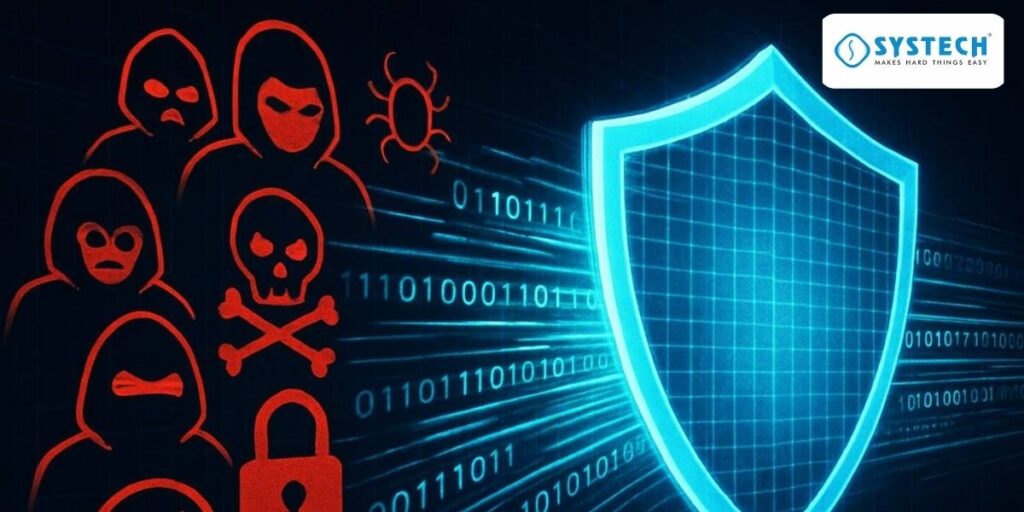Table of Contents
In today’s digital landscape, cybersecurity challenges are growing in complexity and scale. Businesses and individuals alike face an increasing number of threats that jeopardise data, privacy, and infrastructure. The rise of emerging cyber threats, including AI-powered attacks and cloud security vulnerabilities, calls for robust and proactive defence strategies. Tackling these cybersecurity challenges effectively can prevent costly breaches, protect sensitive information, and ensure business continuity. Understanding the evolving nature of these threats and adopting modern security measures is essential for staying safe in the digital world.
What You’ll Learn
- The major cybersecurity challenges confronting organisations today
- Insights into emerging cyber threats and their impact
- How AI-powered cyber attacks complicate security defences
- Best practices to overcome cloud security challenges
- Actionable strategies to build a resilient cybersecurity posture
- The importance of professional cybersecurity training and skill development
Understanding the Biggest Cybersecurity Challenges
With digital transformation accelerating worldwide, cybersecurity challenges have reached new heights. Increasing digital dependencies mean that even minor vulnerabilities can lead to severe disruptions. The cybersecurity landscape now faces threats from multiple fronts—from ransomware attacks and insider threats to advanced persistent threats powered by AI.
The Expanding Attack Surface
The proliferation of the Internet of Things (IoT), cloud migration, and remote working models has expanded the attack surface significantly. This expanded environment is harder to monitor and secure, causing organisations to face challenges related to visibility, endpoint protection, and network segmentation.
Turn Threats into Opportunities
Emerging Cyber Threats Impacting Security
One of the most pressing issues comes from emerging cyber threats that use sophisticated techniques to bypass traditional security tools.
AI-Powered Cyber Attacks
Artificial Intelligence is a double-edged sword. Cybercriminals leverage AI to create adaptive malware, automate massive phishing campaigns, and develop deepfake technologies for convincing social engineering attacks. These AI-powered cyber attacks can evolve in real-time, making detection and mitigation increasingly difficult.
Ransomware Evolution
Ransomware continues to dominate the threat landscape, with criminals employing double extortion tactics where data is encrypted and simultaneously threatened to be leaked. Ransomware-as-a-Service (RaaS) platforms have lowered the barrier for cybercrime, causing exponential growth in attacks.
Cloud Security Challenges
As more organisations adopt cloud infrastructure, cloud-specific cybersecurity challenges have emerged, including system misconfigurations, inadequate access controls, and regulatory compliance complexities. These vulnerabilities can lead to data breaches and service disruptions if not managed correctly.
Supply Chain and Insider Threats
Supply chain attacks target vulnerabilities in third-party software or vendors to compromise multiple organisations at once. Insider threats—whether malicious or accidental—remain a significant risk, exacerbated by more distributed and remote workforces.
Be the Shield Against Digital Attacks!
How to Overcome Cybersecurity Challenges
Overcoming cybersecurity challenges demands awareness, advanced technology, and proactive strategies. Organisations must foster a security-first culture while leveraging AI-driven threat detection, multi-factor authentication, and cloud governance. Regular assessments ensure vulnerabilities are identified and mitigated before exploitation.
Build a Cybersecurity-Aware Culture
Start with people. Educate employees on recognising phishing scams, safe internet practices, and securing their devices. Cybersecurity awareness programs help reduce human error, which is a major vulnerability.
Adopt AI-Driven Security Solutions
Use AI-powered tools to enhance threat detection and response. These tools can identify anomalies, predict threats, and automate threat hunting, making cybersecurity teams more efficient.
Implement Zero Trust Architecture
Zero-trust security assumes that threats exist both inside and outside the network. Continuous verification of users and devices, least privilege access, and micro-segmentation can mitigate lateral movement within the network during breaches.
Regular Vulnerability Assessments
Conduct penetration tests, vulnerability scans, and red teaming exercises frequently to find and fix security weaknesses before attackers can exploit them.
Strengthen Cloud Security
Use specialised cloud security platforms to monitor configurations and access in real-time. Ensure compliance with security policies and automate patching processes.
Multi-Factor Authentication (MFA)
Deploy MFA across all systems to reduce risks from stolen or weak credentials.
The Role of Continuous Cybersecurity Training
Cybersecurity is not a one-time investment—it requires continuous learning and adaptation. As threats evolve, so must the skills of IT teams and employees. Regular training programs, certifications, and simulated attack exercises help organisations stay ahead of adversaries. By investing in skill development, businesses ensure that their workforce is equipped to recognise and respond to the latest threats, reducing the risk of breaches caused by human error or outdated practices.
Professional Training and Skill Development to Defeat Cybersecurity Challenges
Navigating today’s cybersecurity challenges requires skilled professionals equipped with the latest knowledge and hands-on experience. Professional training programs on topics such as ethical hacking, AI threat detection, advanced cloud security, and cyber risk management are critical.
Institutions like Systech Group offer such training with comprehensive courses covering:
- Cloud security management and compliance
- AI and machine learning applications in cybersecurity
- Practical penetration testing and ethical hacking
- Programming languages relevant for cybersecurity, like Python and Java
- Incident response planning and cyber risk assessment
Systech’s industry-aligned curriculum and real-time project work ensure learners are prepared to tackle sophisticated cyber threats effectively.
Build Future-Ready Cyber Skills
Conclusion
In today’s rapidly evolving digital landscape, overcoming cybersecurity challenges is essential to protect sensitive data, privacy, and business continuity. With the rise of emerging cyber threats and sophisticated AI-powered attacks, organisations must adopt proactive and adaptive security strategies. Building a culture of security awareness, embracing advanced technologies, and investing in continuous learning are critical to staying ahead of evolving risks. The future of cybersecurity demands vigilance, innovation, and a commitment to safeguarding the digital world—now is the time to strengthen your defences and secure your digital future.
FAQs
What are the current major cybersecurity challenges?
Emerging cyber threats such as AI-powered attacks, ransomware, and cloud vulnerabilities top the list.
How do AI-powered cyber attacks differ from traditional ones?
They adapt and evolve in real-time, automate phishing, and use deepfake technologies, making them harder to detect.
What makes cloud security challenging?
Misconfigurations, poor access management, and compliance complexities pose significant risks in cloud environments.
How can organisations build resilience against these cyber threats?
By fostering cybersecurity awareness, applying zero trust models, and using AI-driven security tools.
Why is professional cybersecurity training important now?
It equips professionals with up-to-date skills and practical knowledge to effectively combat modern cyber threats.

